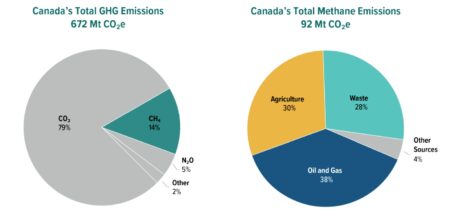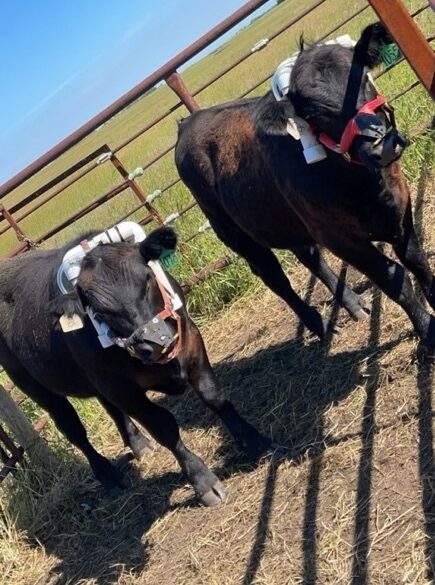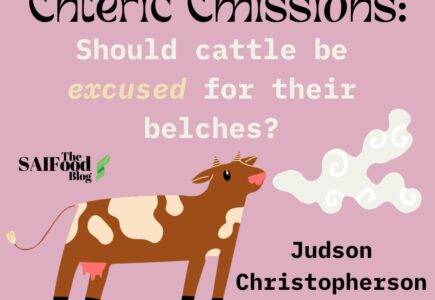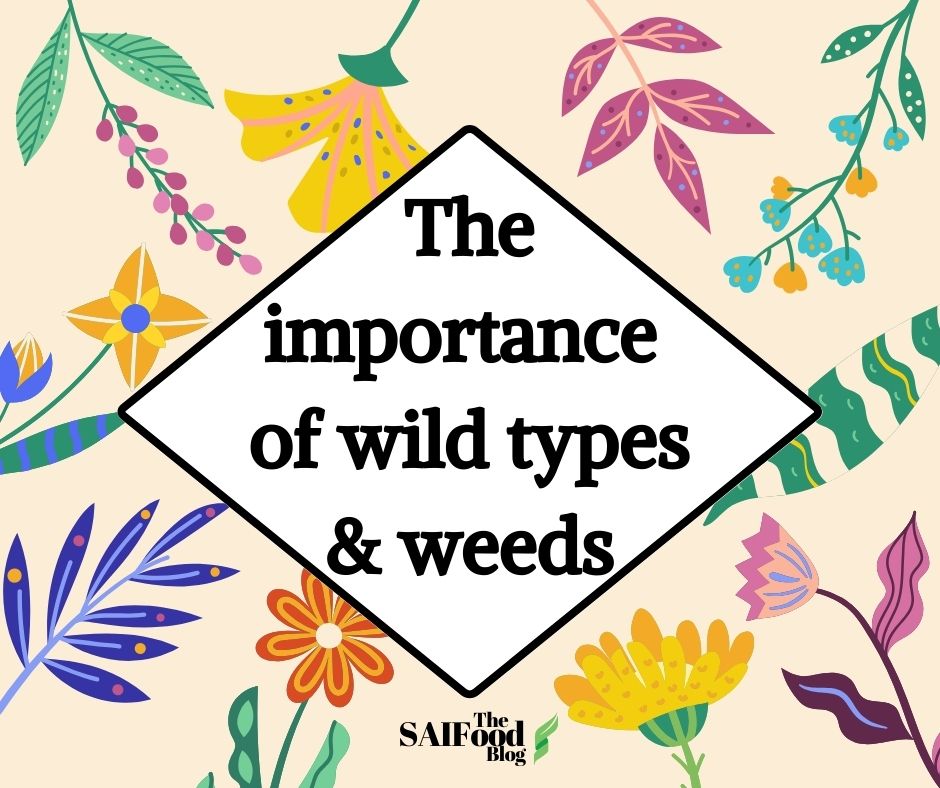Cow-farts, the climate killer?
Enteric methane emissions, or ‘cow farts’, are the by-product of enteric fermentation, a digestive process occurring in all ruminant animals. These emissions are not limited to farts, with the majority of enteric methane being exhaled by ruminants. The root of enteric emissions is microbial fermentation in the rumen, one of the four stomachs contained within a ruminant animal. Depending on the quality and quantity of feed consumed by cattle, up to 12% of their energy is lost to enteric fermentation and released as methane.

Much concern has been generated regarding enteric emissions and the potential negative impacts of climate change amongst activists, academics, and politicians. Rightfully so, as ruminants are responsible for over 30% of global methane emissions.
Or, are they?
In 2021, the Intergovernmental Panel on Climate Change (IPCC) reported their widely used reporting methods were overestimating enteric methane emissions by three to four times actual emissions. The IPCC, as subset of the United Nations, is recognized as a global leader in assessing the science related to climate change. Missteps such as this can cause great amounts of economic harm and must not be taken lightly by the livestock production sector. More prominent, geographically diverse, and practical field research is required to determine enteric emission levels, how emissions can be mitigated, and how field research can be accurately extrapolated to all of agriculture.
The negative perception of beef, backed by overblown emission estimates, has undoubtedly caused much pessimism in the beef industry. However, the public needs to gain greater awareness of the momentous achievement of which enteric emissions are merely a by-product: the conversion of low-quality forages on marginal lands into high quality protein that can be placed on grocery store shelves. In this context, the use of marginal land is critically important to understanding livestock production. Marginal lands are those which are most productive in a natural or improved grassland setting, actually proving to be detrimental to economic and environmental sustainability under crop production in many instances. Therefore, many of the lands used for feeding livestock could not be used for crop production. Further, the grazing of these lands (performed by ruminants) provides a multitude of ecosystem services such as increasing carbon sequestration capacity, advancing biodiversity prospects, and protecting watersheds. To properly balance the narrative surrounding cow-calf production each of these factors amongst other must be considered when enteric emissions are tabulated and analyzed.
Mitigation efforts: a rapidly growing research field

Given the significant attention surrounding enteric emissions, it is unsurprising that researchers and the beef sector as a whole are searching rapidly for solutions. Promisingly, many solutions are currently under extensive scrutiny from some of the world’s top researchers, including biochar, 3-NOP, seaweed, and other feed additives.
Using the open pores of biochar to contain the bacteria responsible for enteric fermentation, the material has been shown to reduce emissions between 6-15% in dairy trials. 3-NOP is a promising Dutch feed additive that was found to reduce emissions by 25% and slightly increase feed use efficiency without adverse effects on animal health. Including seaweed in ruminant diets also generates sizeable declines in enteric methane emissions with as little as 50 grams per day inclusion rate. Nonetheless, challenges exist in implementing these feed additives, posing significant hurdles to reducing the emission footprint of the cattle industry.
Mitigation Challenges
Unfortunately, mitigation efforts are unlikely to be mainstream in the livestock industry in the near term. A variety of challenges, including bureaucratic red tape, a lack of adoption incentives, and logistical challenges interfere with the rapid uptake of these mitigation methods. Sourcing seaweed and biochar to feed to 100,000 bovines would be difficult; sourcing enough to find a significant portion of the 1.5 billion bovine mouths across the globe is currently impossible. 3-NOP and other feed additives can be more rapidly produced and distributed. However, without further research and a lengthy regulatory approval process, these products cannot be used in animals that will enter the food chain. Given the vast potential of these products in a feedlot setting, it would be advisable to get these products approved and in feedlots as soon as possible.
Extensive feeding systems represent another hurdle as 78% of Canadian enteric emissions from livestock come from the largely extensive cow calf sector. Given that these animals are fed via the grazing of standing forages throughout much of the year and fed high-forage diets in an uncontrolled setting throughout the winter, supplementing with proper dosages is improbable. Greater innovation is needed in this area to provide spray-on solutions, long-lasting supplements (i.e., annual administration), and free choice mineral add-ins are needed to ease the use of mitigation strategies in all segments of the cattle supply chain. Finally, policy makers or consumers need to answer a simple question many livestock producers may have: why would I buy expensive supplements for my herd if there is no direct payoff? Therefore, either policy makers need to incentivise the use of additives or consumers need to express a desire for beef products raised with methane mitigating additives; both will need to do so with their wallets.




